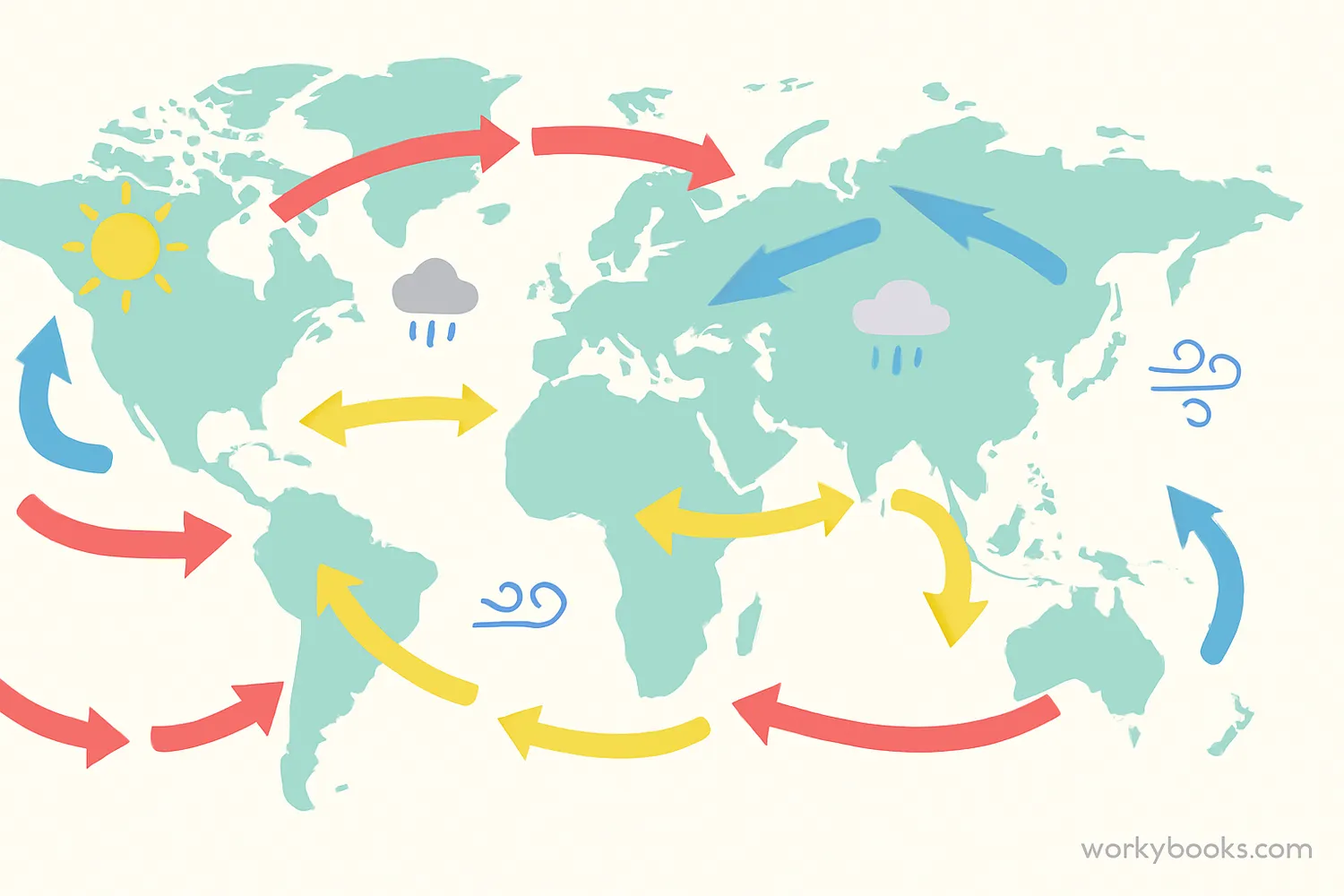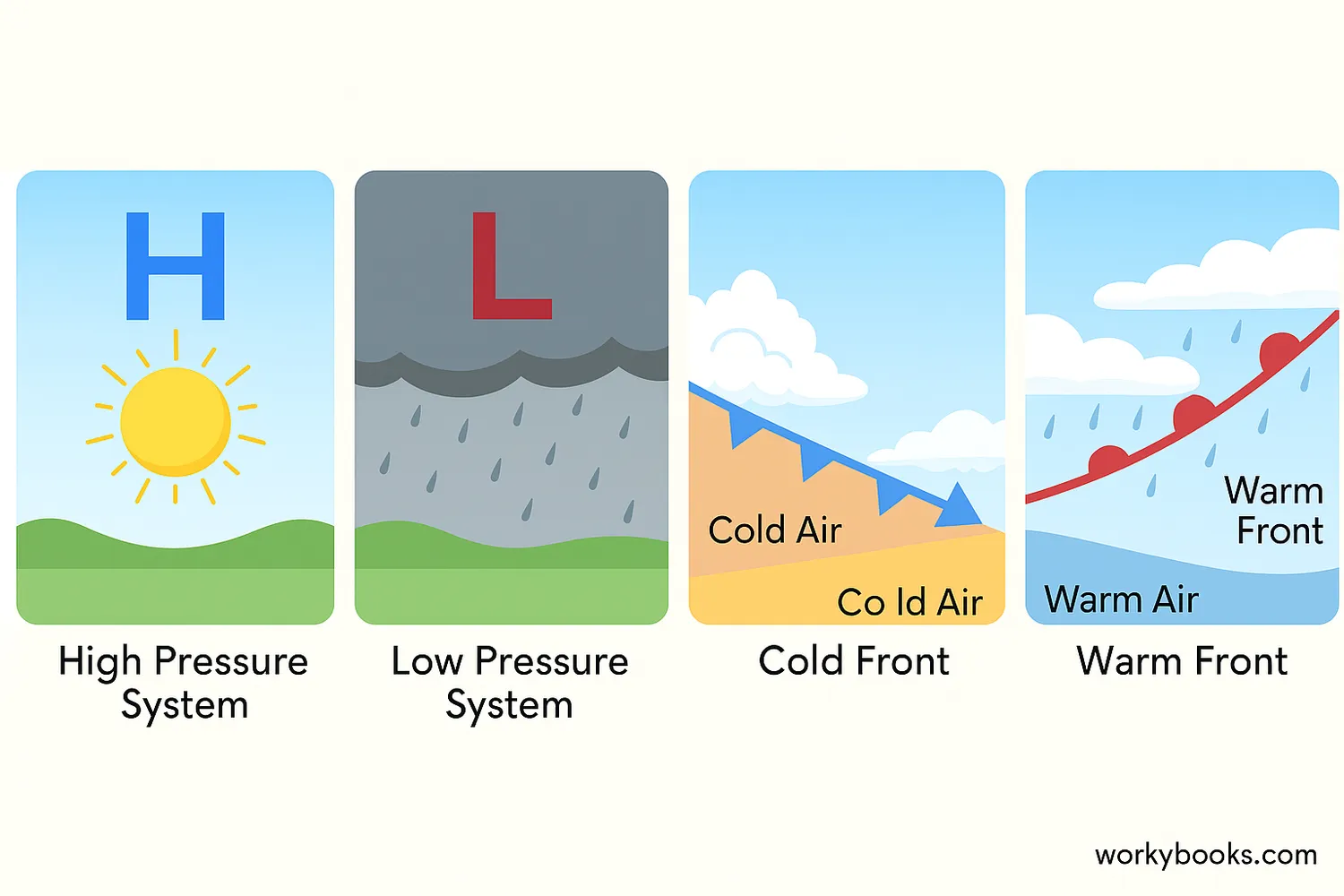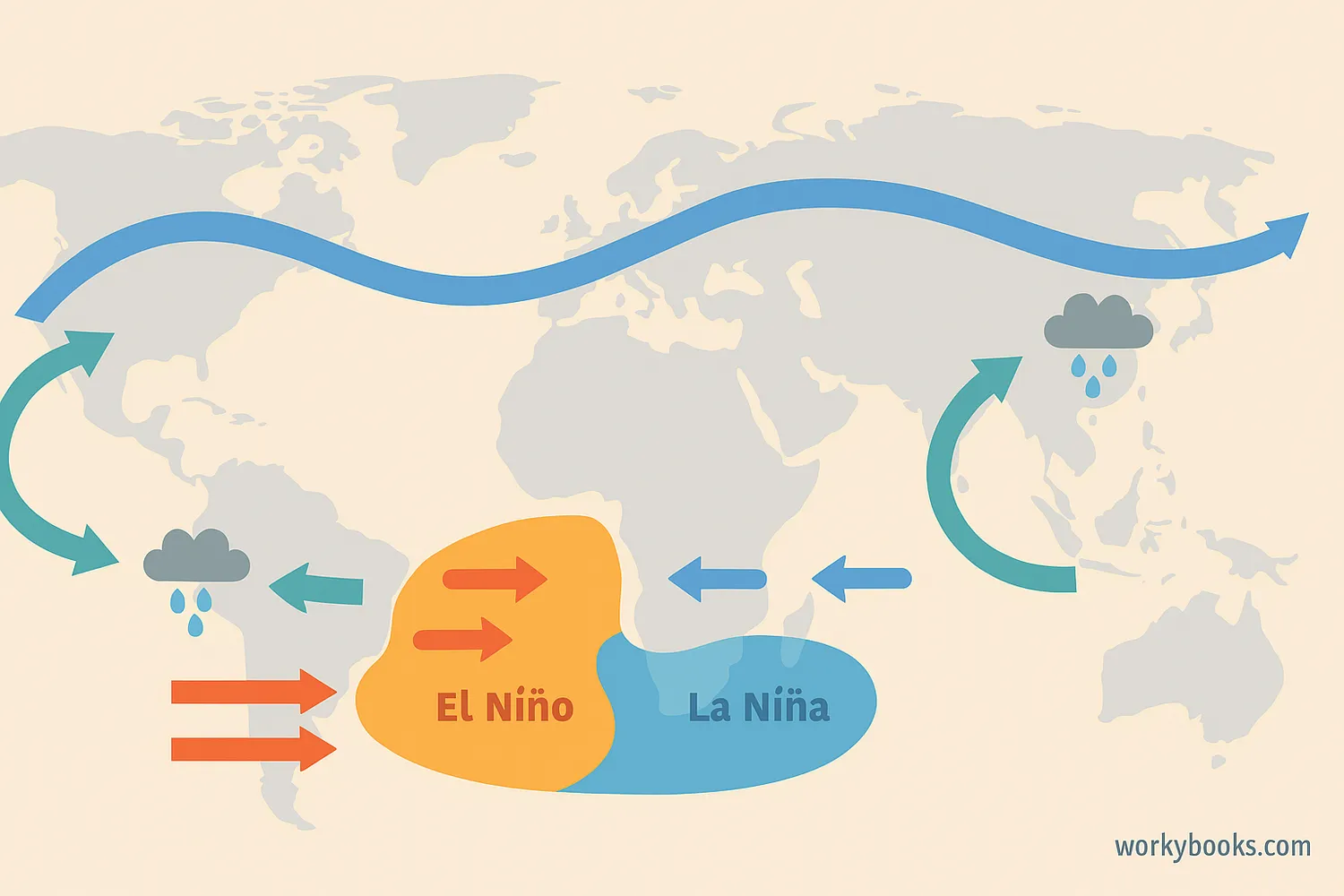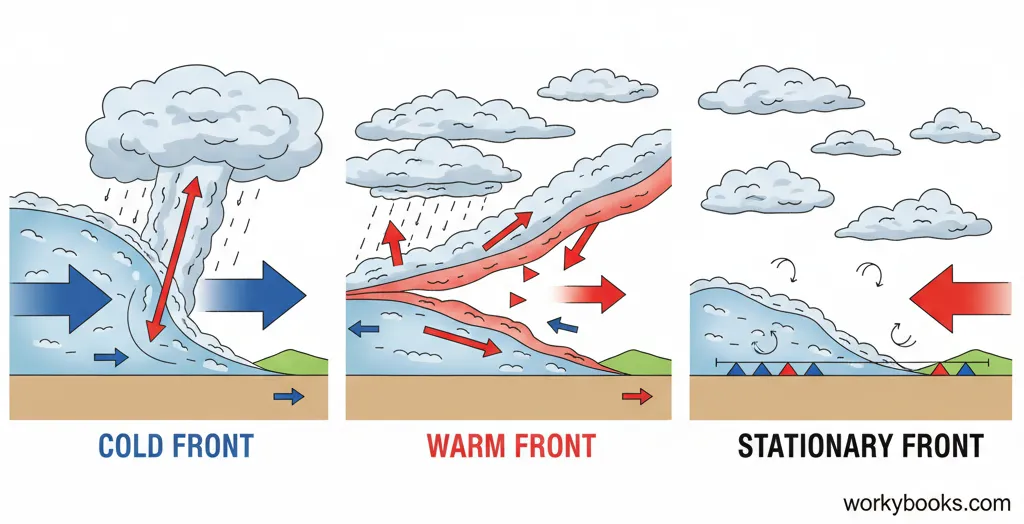Weather Patterns - Definition, Examples, Quiz, FAQ, Trivia
Discover how weather patterns work and why they are so important to our planet's climate system.
What are Weather Patterns?

Weather patterns are the repeated way the atmosphere behaves in a particular region. They describe how weather elements like temperature, precipitation, wind, and atmospheric pressure change over time. Unlike daily weather, which can change quickly, weather patterns show us how weather behaves over weeks, months, or even years.
Key Concept
Weather patterns help scientists predict what the weather might be like in the future. They're like nature's routines that repeat in cycles, helping us understand seasonal changes and climate trends.
Types of Weather Patterns
There are many different types of weather patterns that affect our planet. Some are local, while others are global in scale.

High Pressure Systems
High pressure systems usually bring clear skies and calm weather. Air sinks in these systems, preventing cloud formation. They often follow storms and bring pleasant weather conditions.
Low Pressure Systems
Low pressure systems often bring clouds, precipitation, and sometimes storms. Air rises in these systems, cooling and forming clouds. They're associated with unsettled weather.
Frontal Systems
Fronts are boundaries between different air masses. Cold fronts bring cooler weather and storms, while warm fronts bring warmer weather and light rain. Stationary fronts can bring prolonged precipitation.
Seasonal Patterns
Some weather patterns change with the seasons. Monsoons are seasonal wind patterns that bring heavy rainfall to certain regions. Other patterns like Santa Ana winds occur at specific times of year.
Global Weather Patterns
Some weather patterns affect the entire planet. These large-scale patterns influence weather across continents and oceans.

Major global weather patterns include:
- El Niño and La Niña: These are changes in ocean temperatures in the Pacific that affect weather worldwide. El Niño brings warmer ocean waters, while La Niña brings cooler waters.
- Jet Stream: A fast-moving ribbon of air high in the atmosphere that guides weather systems from west to east. Its position affects temperature and storm tracks.
- Monsoon: A seasonal reversal of wind patterns that brings heavy rainfall to regions like Southeast Asia and the southwestern United States.
- Trade Winds: Consistent wind patterns near the equator that helped sailors in the past and still influence weather today.
Weather Systems & Fronts
Weather systems are organized patterns of atmospheric circulation that determine our daily weather. Fronts are the boundaries between different air masses.

Cold Fronts
Cold fronts occur when a cold air mass pushes under a warmer air mass. This forces the warm air to rise quickly, often creating cumulonimbus clouds that can produce heavy rain, thunderstorms, or even tornadoes.
Warm Fronts
Warm fronts form when a warm air mass slides over a retreating cold air mass. This creates a gentle slope that produces layered clouds and widespread, light precipitation over a large area.
Stationary Fronts
When two air masses meet but neither advances, a stationary front forms. These can bring many days of cloudy, wet weather as the front lingers in one area.
Occluded Fronts
Occluded fronts occur when a cold front catches up to a warm front. This complex system often brings precipitation and is common in mature low-pressure systems.
Weather Patterns Quiz
Test your knowledge about weather patterns with this short quiz. Choose the best answer for each question.
Frequently Asked Questions
Here are answers to common questions about weather patterns:
Science Trivia
Here are some interesting facts about weather patterns:
Lightning Fast
Lightning strikes the Earth about 100 times every second. That's over 8 million strikes per day! Most occur in areas with specific weather patterns that create thunderstorms.
Water World
The water in the atmosphere at any moment is enough to cover the entire Earth with 1 inch of rain. Weather patterns move this water around the planet in a continuous cycle.
Super Speeds
The fastest wind speed ever recorded on Earth was 253 mph during a tropical cyclone. That's faster than the top speed of most race cars!





